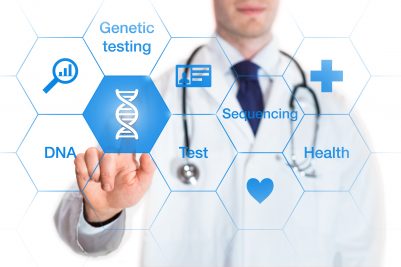DOWNLOAD FREE WHITE PAPER
Download a complimentary copy of our white paper: The Litigator’s Guide to Using Genomics in a Toxic Tort Case

This is our second comment on a very recent paper (Panou 2018) reporting findings from a study looking for germline (inherited) variants (mutations) in persons afflicted by mesotheliomas. The paper reported results from a custom gene panel analysis of 195 genes associated with cancers to study a cohort of 198 persons, mainly persons who were treated for mesothelioma at the University of Chicago in 2016-17. The study findings – and statements in the Panou paper – have implications for courtrooms.
In our first comment, we pointed out variables and other factors readers need to keep in mind when thinking about the findings and statements in the paper regarding variants in cancer-associated genes. In this comment, we focus on statements about “long-standing, low level environmental exposures,” as well as statements about “susceptibility” to cancers (in contrast to “predisposition”). We have written about this important distinction in a previous blog post.
Specifically, some statements from the Panou paper are relevant to risks and opportunities related to legal claims about mesotheliomas. According to the authors:
[Both pleural and peritoneal mesotheliomas] are “strongly associated with prior asbestos exposure. Heavy occupational exposure or long-standing, low-level environmental exposure increases the risk, yet only a fraction of exposed individuals develop MM and other patients with MM have no identifiable history of exposure to asbestos or asbestiform minerals. These data suggest that individuals who are not resistant to the carcinogenic affects of asbestos and those who developed MM with minimal or no asbestos exposure may have an underlying inherited susceptibility.
Identification of germline mutations in BAP1 in families with multiple relatives with MM and studies that have demonstrated more frequent and accelerated MM development in mice that carry one abnormal copy of Bap1 exposed to even low levels of asbestos compared with wild-type mice provide a proof of principle that germline genetics contribute to MM risk. More recently, germline mutations in other cancer susceptibility genes, including ATM, CDKN2A, BRCA1, BRCA2, MSH6, MLH1, PALB2, and TP53, have been reported in individual patients; however, the prevalence and causative role of germline mutations and known cancer susceptibility genes in MM remain unknown.“ (from the paper’s Introduction)
The language quoted above presumably would be liked and used by the growing number of plaintiffs’ lawyers who are actively embracing “genetic susceptibility” when trying some mass tort cases. For example, lawyers at the Kazan law firm in Oakland embraced the “susceptibility” argument when they took a case to trial in early 2016 involving a woman (Mrs. Ortwein) with a pleural mesothelioma and a proven germline (inherited) mutation in BAP1. To that end, they brought in a well-credentialed genetics witness (Dr. Testa), who testified that her inherited BAP1 mutation left her more susceptible to develop mesothelioma from low level asbestos exposure.
Similarly, the Lanier firm embraced some genetic susceptibility arguments in the recent trial (Ingham) in which they represented 22 women who claimed they developed ovarian cancers because of exposure to talc alleged to contain asbestos fibers. There too, the plaintiffs brought in a well-credentialed expert on genetics and carcinogenesis (Dr. Felsher) to address cancer issues including some limited testimony that adverse gene variants push a person “closer to the cliff” and is analogous to adding “fuel” to a fire. Ultimately, Dr. Felsher testified that asbestos in talc contributed to the development of all 22 ovarian cancers. While we believe joining together so many cases and opinions is scientifically (and legally) unwarranted, the jury ultimately found in favor of all 22 ovarian cancer plaintiffs.
Overall, our point is that genetic evidence continues to take on a larger and larger role in some mass tort personal injury cases, but many lawyers continue to be unaware of the science or associated legal issues. Plainly, some well-informed plaintiff lawyers and clients have embraced some genetic strategies – specifically genetic susceptibility arguments — with respect to “toxic tort” cases, and have successfully argued the science to buttress their cases. Conversely, some well-informed defense lawyers and clients have embraced some genetic facts to successfully defeat personal injury claims by showing that a cancer was caused by genetics as opposed to an exposure. In sum, some well-informed lawyers and clients on both sides of the aisle have effectively utilized genetic data to materially alter the outcome of cases.
However, many lawyers and clients remain uninformed about genetic science as related to toxic tort cases, and they are not seeing opportunities and risks that exist for various subsets of toxic tort cases. For example, all trial lawyers need to understand the nuances of terms such as “genetic susceptibility” and “genetic predisposition.” The terms do have different meanings, and the differences should be used carefully and indeed before and during trial.
For more specifics on these and other topics, see our White Paper: The Litigator’s Guide to Using Genomics in A Toxic Torts Case.
As we mentioned in our last post, the next few weeks include multiple events at which we expect there will be discussion of the Panou paper and other topics related to genetics, asbestos and cancers. One event will be the IASLC 19th World Conference on Lung Cancer meeting in Toronto (September 23-26). Several sessions of that annual meeting will be focused on mesothelioma. Another event will arise when Drs. Michele Carbone and Arnold Brody speak on a panel on October 1 at the Perrin National Asbestos Litigation Conference in San Francisco. We urge you to take one or more of these opportunities to learn more about the vast amount of new genetic data relevant to mass tort cases.
And, finally, watch for our announcement of an October webinar focused on use of genetics in mass tort cases.
Download a complimentary copy of our white paper: The Litigator’s Guide to Using Genomics in a Toxic Tort Case